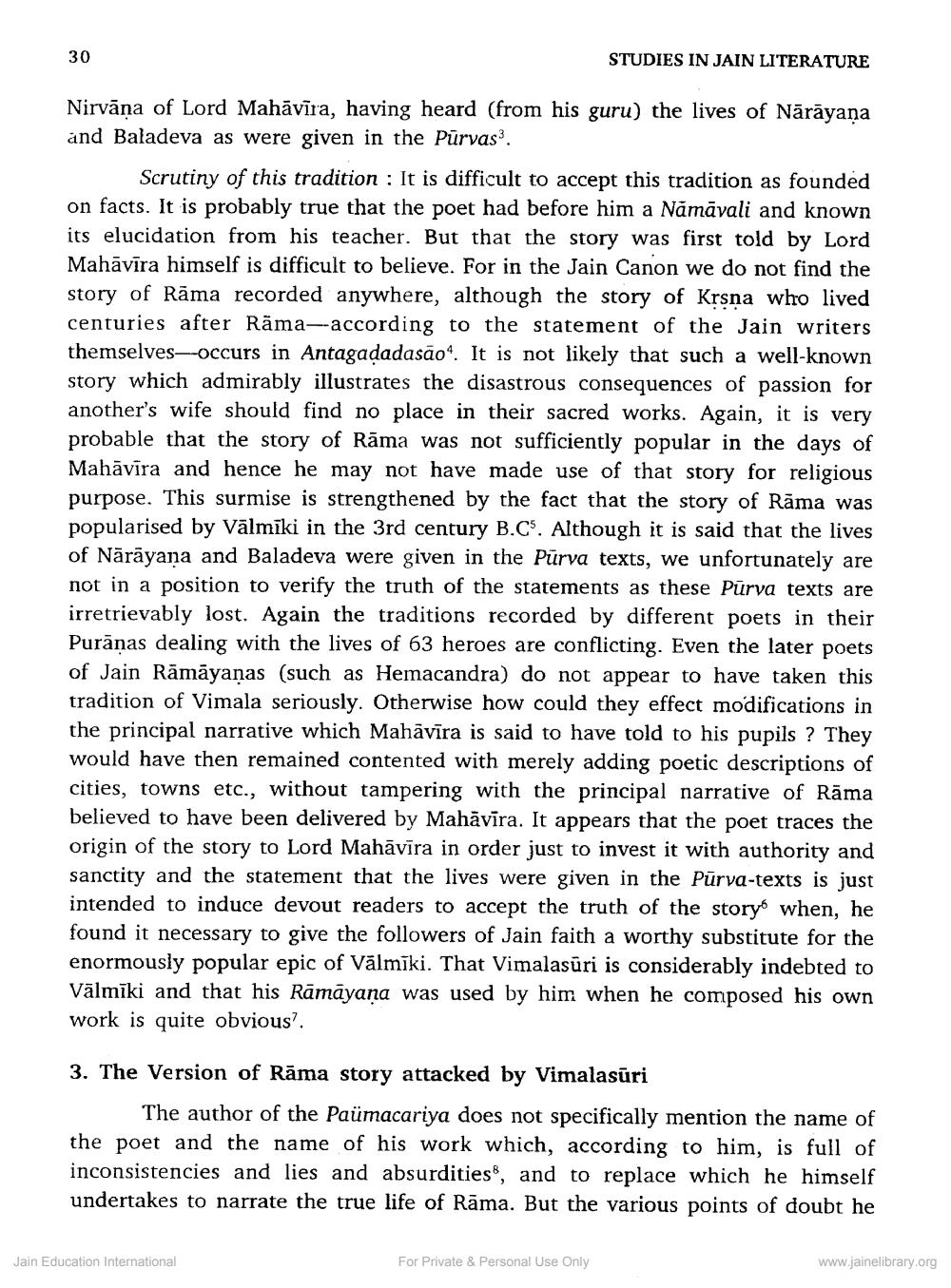________________
30
STUDIES IN JAIN LITERATURE
Nirvana of Lord Mahāvīra, having heard (from his guru) the lives of Nārāyana and Baladeva as were given in the Pūrvas.
Scrutiny of this tradition : It is difficult to accept this tradition as founded on facts. It is probably true that the poet had before him a Nămāvali and known its elucidation from his teacher. But that the story was first told by Lord Mahāvīra himself is difficult to believe. For in the Jain Canon we do not find the story of Rāma recorded anywhere, although the story of Krsna who lived centuries after Räma-according to the statement of the Jain writers themselves--occurs in Antagadadasão4. It is not likely that such a well-known story which admirably illustrates the disastrous consequences of passion for another's wife should find no place in their sacred works. Again, it is very probable that the story of Rāma was not sufficiently popular in the days of Mahāvīra and hence he may not have made use of that story for religious purpose. This surmise is strengthened by the fact that the story of Rāma was popularised by Vālmīki in the 3rd century B.C. Although it is said that the lives of Nārāyana and Baladeva were given in the Purva texts, we unfortunately are not in a position to verify the truth of the statements as these Purva texts are irretrievably lost. Again the traditions recorded by different poets in their Purānas dealing with the lives of 63 heroes are conflicting. Even the later poets of Jain Rāmāyanas (such as Hemacandra) do not appear to have taken this tradition of Vimala seriously. Otherwise how could they effect modifications in the principal narrative which Mahāvīra is said to have told to his pupils ? They would have then remained contented with merely adding poetic descriptions of cities, towns etc., without tampering with the principal narrative of Rāma believed to have been delivered by Mahāvīra. It appears that the poet traces the origin of the story to Lord Mahāvīra in order just to invest it with authority and sanctity and the statement that the lives were given in the Purva-texts is just intended to induce devout readers to accept the truth of the story when, he found it necessary to give the followers of Jain faith a worthy substitute for the enormously popular epic of Vālmīki. That Vimalasuri is considerably indebted to Vālmīki and that his Rāmāyaṇa was used by him when he composed his own work is quite obvious.
3. The Version of Rāma story attacked by Vimalasūri
The author of the Paümacariya does not specifically mention the name of the poet and the name of his work which, according to him, is full of inconsistencies and lies and absurdities, and to replace which he himself undertakes to narrate the true life of Rāma. But the various points of doubt he
Jain Education International
For Private & Personal Use Only
www.jainelibrary.org




